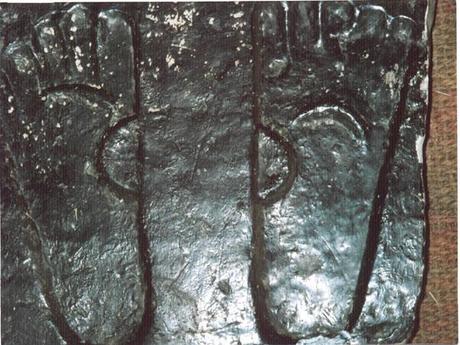Jesus in India

Jesus (peace be upon him) survived the crucifixion and travelled towards India to continue his ministry among the Lost Tribes of Israel. Furthermore, they claim that his tomb, containing his body, has been recently re-discovered in India where it can be seen to this day. Ahmadi Muslims also assert that this belief is not only upheld by the Holy Quran and the Sayings of Muhammad (sa), but even by the Holy Bible itself.Reed more!
The Kashmir Tomb

The burial place of Jesus in Kashmir is known to the locals as Rauzabal, meaning the Honored Tomb. It is known as the tomb of Yuz Asaf, which may be of Buddhist derivation (see link) or possibly from Yusu or Yehoshua (Jesus) the Gatherer. Local tradition states that the entombed was a prophet of Ahle-Kitab, or People of the Book, and his name was Isa – the Quranic name for Jesus. The prophet Yuz Asaf came to Kashmir from the West (Holy Land) in the reign of Raja Gopdatta (c 1st century A.D) according to the ancient official documents held by the current custodian of the tomb. Some of the most extensive research on the tomb has been conducted by the now retired famous historian and former Head of Archaelogy for State of Kashmir, Professor Fida Hassnain. The tomb is Jewish, as attested by the direction the grave is lying. Next to the grave is a footprint engraved in stone, an artistic rendition of the wounds of crucifixion. Reed more!
There will be more!
 Some contemporary scholars repeatedly insist that the Messiah ibn-e-Maryam has not died, rather he was raised alive to heaven, and is present in heaven with his physical, worldly body and life. And with great boldness and insolence they state that the word tawaffi that has come in reference to the messiah does not mean death, rather it means “to take fully”. Meaning, that the body was taken along with the soul. But to translate it in this way is clear fabrication. The Qur’an in its idiom has in every place used this word to mean the taking of the soul and death. This same meaning is found in all ahadith and sayings of the Holy Prophet(sa). Ever since the Arabian Peninsula was inhabited and the Arabic language began, it cannot be shown through any ancient or modern text that the word tawaffi has been used for taking the body. Rather, wherever the word tawaffa has been attributed as a verb to Allah in regards to a human being, it has only ever meant causing death and taking of the soul and not in the sense of taking the body. There is no Arabic dictionary that presents something contrary to this. There is no expression or saying attributed to the experts of the language that is against this. Thus, there is not the slightest chance of a separate meaning. If anyone presents proof from the Holy Qur’an, or any hadith of the Holy Prophet(sa), or poetry, odes or ancient or modern arabic prose that in any place where the word tawaffi as a verb attributed to Allah is used regarding an animate individual, means anything other than causing death and taking the soul, that is to say that it also means the taking of the body, then I swear by Allah the Magnificent an oath according to proper Islamic law that I will give such a person one thousand rupees in cash by selling some portion of my property and will from hereon in admit his excellence in the sciences of hadith and the Holy Qur’an. (Ruhani Khazain, vol. 3, Izala Auham, pgs. 602-603) Reed more!
Some contemporary scholars repeatedly insist that the Messiah ibn-e-Maryam has not died, rather he was raised alive to heaven, and is present in heaven with his physical, worldly body and life. And with great boldness and insolence they state that the word tawaffi that has come in reference to the messiah does not mean death, rather it means “to take fully”. Meaning, that the body was taken along with the soul. But to translate it in this way is clear fabrication. The Qur’an in its idiom has in every place used this word to mean the taking of the soul and death. This same meaning is found in all ahadith and sayings of the Holy Prophet(sa). Ever since the Arabian Peninsula was inhabited and the Arabic language began, it cannot be shown through any ancient or modern text that the word tawaffi has been used for taking the body. Rather, wherever the word tawaffa has been attributed as a verb to Allah in regards to a human being, it has only ever meant causing death and taking of the soul and not in the sense of taking the body. There is no Arabic dictionary that presents something contrary to this. There is no expression or saying attributed to the experts of the language that is against this. Thus, there is not the slightest chance of a separate meaning. If anyone presents proof from the Holy Qur’an, or any hadith of the Holy Prophet(sa), or poetry, odes or ancient or modern arabic prose that in any place where the word tawaffi as a verb attributed to Allah is used regarding an animate individual, means anything other than causing death and taking the soul, that is to say that it also means the taking of the body, then I swear by Allah the Magnificent an oath according to proper Islamic law that I will give such a person one thousand rupees in cash by selling some portion of my property and will from hereon in admit his excellence in the sciences of hadith and the Holy Qur’an. (Ruhani Khazain, vol. 3, Izala Auham, pgs. 602-603) Reed more! 






